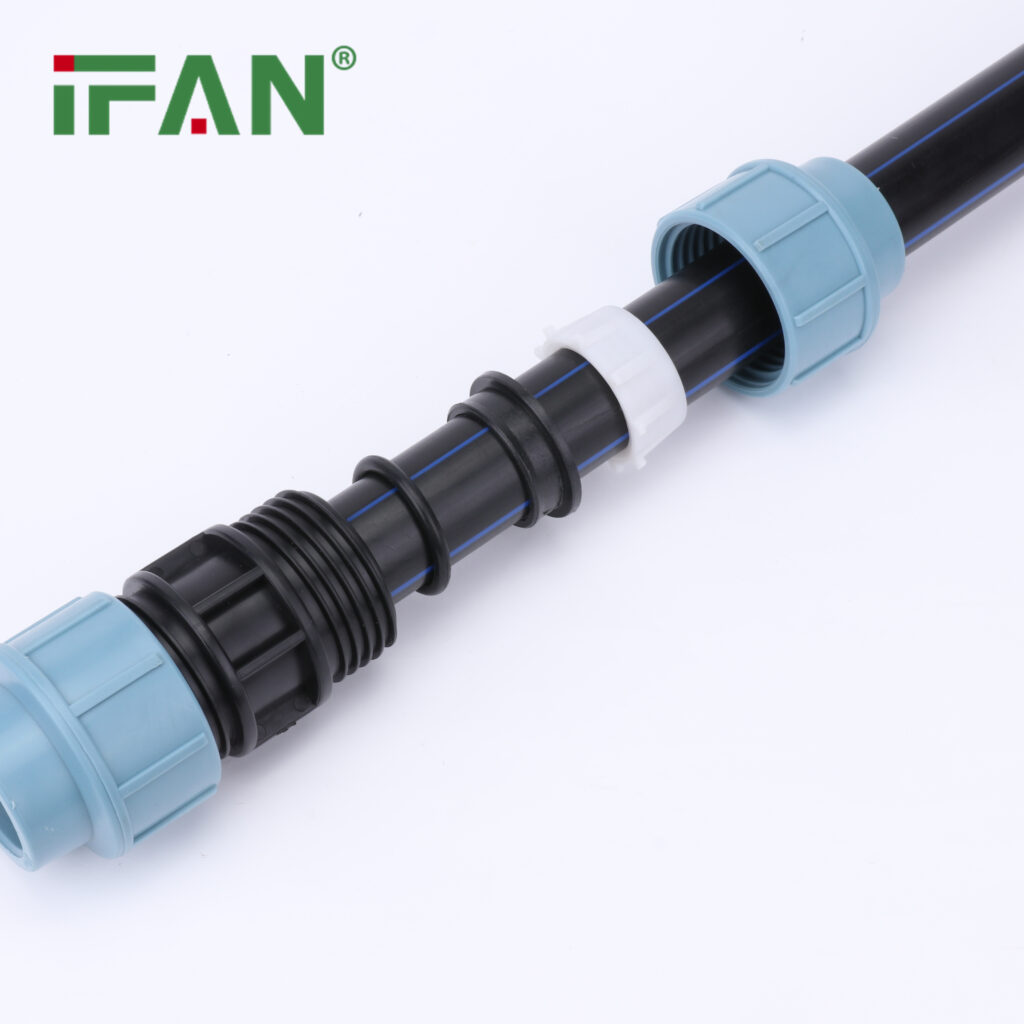HDPE for Non-Pressure Applications Using
HDPE Fittings in Low-Pressure Drain, Waste, and Vent Systems
Polyvinyl chloride (PVC) has traditionally dominated low-pressure drainage, waste, and vent (DWV) plumbing systems. But high-density polyethylene (HDPE) pipe and fittings now offer an advantageous alternative non-pressure piping solution. This article explores HDPE for DWV applications.IFAN factory with 30+ years of manufacturing experience supports color/size customization and free samples. Welcome to consult for catalog and free samples. This is our Facebook Website: www.facebook.com.

HDPE Drainage Materials
Several material options suit non-pressure HDPE DWV piping:
- Solid wall HDPE pipe and fittings – Smooth bore handles moderate external loads.
- Profile wall HDPE pipe – Adds stiffness while reducing weight.
- Corrugated HDPE pipe – Lightweight, flexible, high flow capacity.
- Perforated HDPE pipe – Allows water ingress and drainage collection.
HDPE for non-pressure uses follows standards like ASTM F714 and ASTM D3350. Material engineering balances durability, chemical resistance, flow capacity, and elongation.
Key Properties of HDPE for DWV Systems
HDPE demonstrates properties that make it highly suitable for non-pressure drainage piping:
- High tensile and flexural strength prevents cracks from settling.
- Resilience tolerates ground movement and seismic shifts.
- Withstands soil loads and abrasion compared to fragile PVC.
- Not subject to creep deformation over time.
- Chemically resistant to conveying corrosive effluents.
- Lightweight compared to concrete, clay, or cast iron piping.
HDPE material quality exceeds the needs of low-pressure drainage environments.
HDPE Non-Pressure Pipe Joining Methods
Several techniques produce leak-free joints for non-pressure HDPE drainage systems:
- Electrofusion – Integral coil melts and fuses sections together.
- Butt Fusion – Heated pipe ends get pressed together, forming monolithic welds.
- Mechanical Couplings – Stainless steel clamps join plain ends with gaskets.
- Flanges – Bolted bracket connections allow easy assembly.
- Compression Fittings – Tighten gaskets between pipes and socket fittings.
Both permanent fusion and demountable mechanical options suit field assembly and future modifications.
Applications for HDPE Non-Pressure Drainage Pipe
Typical applications benefiting from HDPE non-pressure drainage pipes include:
- Sanitary sewer mains and building connections.
- Foundation perimeter drainage collection lines.
- Highway, airfield, and stadium drainage conduits.
- Landfill leachate and gas collection piping.
- Mining slurry and waste effluent piping.
- Building roof runoff leaders and stormwater drains.
- Subsoil drainage for golf courses and agriculture.
- Vent stacks for soil gases and plumbing exhaust.
HDPE safely handles large drainage flows across environmental conditions that quickly corrode metal.
Advantages of HDPE vs. PVC
HDPE drainage systems offer advantages compared to standard PVC drains:
- Greater impact and puncture resistance avoid breaks.
- No risk of joint or pipe defects from poor solvent welding.
- Withstands abrasion from silt and grit in storm effluent.
- Maintains function through freeze/thaw extremes.
- Electrofusion joints employ no glues or primers.
- Improved chemical handling for industrial waste streams.
- Lighter weight and flexibility ease installation.
HDPE provides durable, high-capacity drainage piping across municipal and industrial needs.
Large Diameter HDPE Non-Pressure Piping
Recent innovations enable large-diameter HDPE drainage pipes:
- Corrugated pro-wall – Up to 60” diameter conduit with high flows.
- Box-profile wall – Rectangular and square pipes for unique needs.
- Custom fabricated fittings – Large tees, wyes, elbows, and adapters.
Big pipes and connections join together without leakage or blockage issues that degrade flow. HDPE toughness prevents damage from debris impact.
The Future of HDPE in Drainage Applications
With advanced polyethylene materials and fused joints, HDPE increasingly displaces traditional but inferior DWV piping:
- PVC lacks the durability and chemical resistance of HDPE.
- Concrete and clay are brittle with leaky joints.
- Steel and cast iron corrode over time.
Specifying HDPE for critical building, highway, and industrial DWV systems ensures maximum performance and service life. Contact us to learn more about utilizing HDPE’s advantages over traditional non-pressure pipe materials.
IFAN
IFAN factory started in 1993. And IFAN has a workshop of 120000 square meters with 610 staff. IFAN can design and produce all plumbing pipe and fitting including PPR, PVC, CPVC PPSU HDPE PEXA PEXB PERT pipe and fitting, brass fitting, brass ball valve, heating system, gas system, sanitary faucets, and hose, In the past 30 years, IFAN has never forgotten his mission-To protect health and safety. And IFAN factory uses the best materials to produce high-quality pipe and fittings with an automatic production line and high-tech quality control machines.

